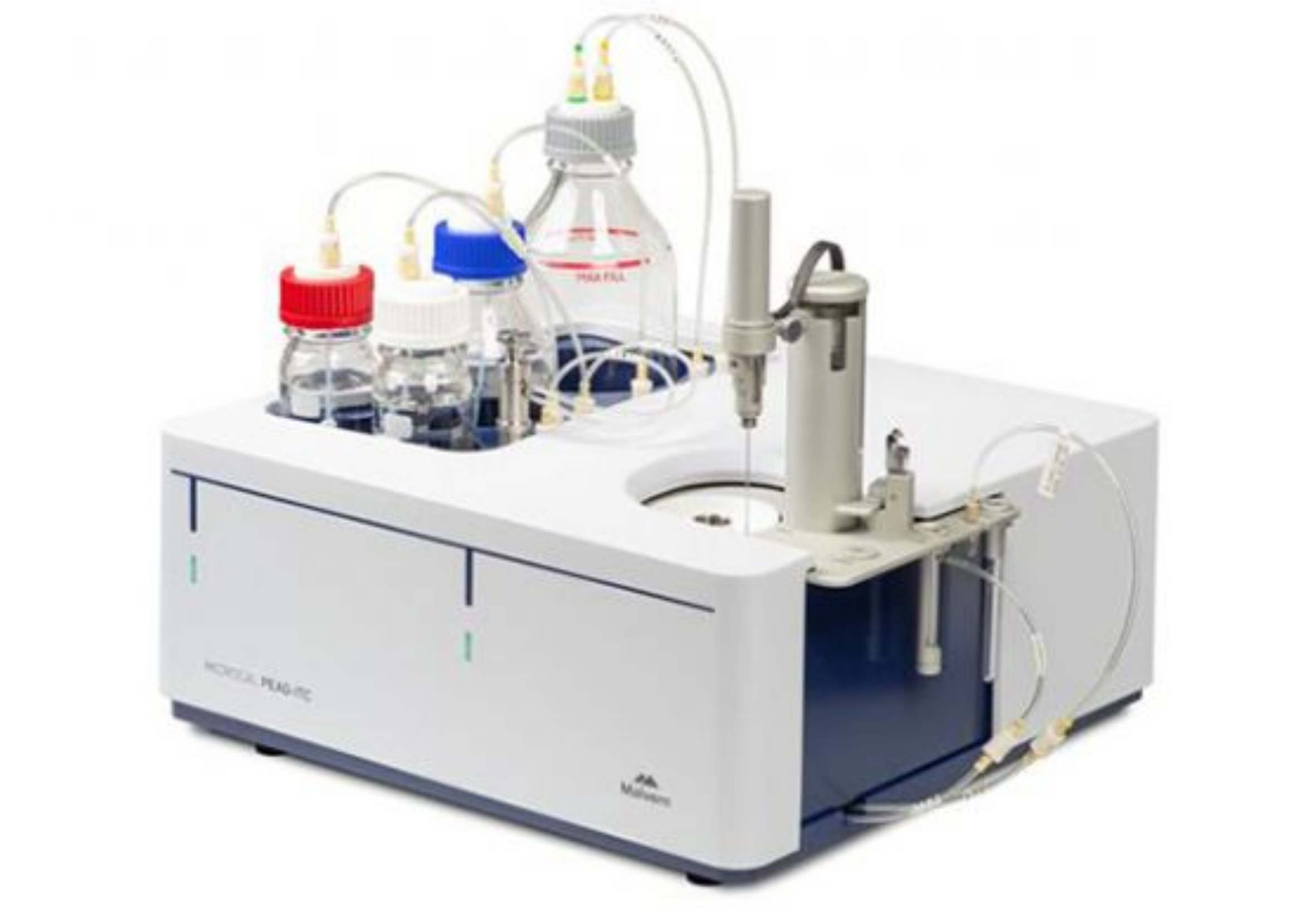Isothermal Titration Calorimetry (ITC)
Application: Biomolecular interaction
Instrument: MicroCal PEAQ-ITC (Malvern Panalytical)
Location: VBC6, room E34

Isothermal titration calorimetry measures the heat absorbed (endothermic) or generated (exothermic) when two molecules interact. This heat is the result of the redistribution of non-covalent bonds when the interacting molecules go from the free to the bound state. ITC monitors these minimal heat changes by measuring the differential power, applied to the cell heaters, required to maintain zero temperature difference between the reference and sample cells as the binding partners are titrated.
The system is set up so the reference cell usually contains water, while the sample cell contains one of the binding partners (the sample, often but not necessarily a macromolecule) and the stirring (titration) syringe holds the other binding partner (the ligand). The ligand is injected into the sample cell, typically in 0.5 to 3 μL injections, until the ligand concentration is two- to three-fold greater than the sample.
Each ligand injection results in a heat pulse that is integrated with respect to time and normalized to ligand concentration to generate a titration curve of kcal/mol vs. molar ratio (ligand/sample). This results in the so-called Wiseman isotherm that is fitted to a binding model to obtain the affinity (KD), stoichiometry (N) and enthalpy of interaction (ΔH).
Measurements can be performed by the users themselves after having received a compulsory training.
Measurements can also be performed by ProTech staff upon request.


